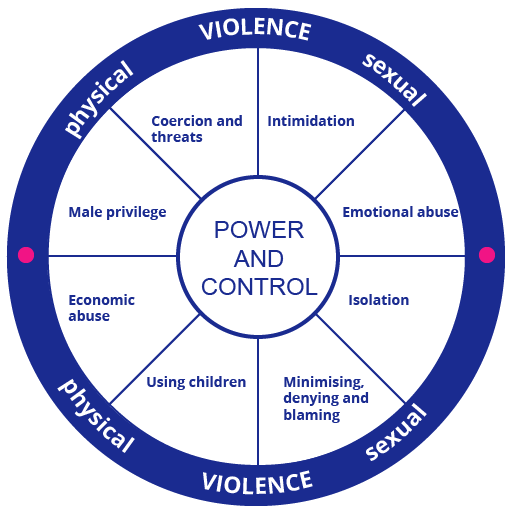1.5 What is coercive control?
This section focuses on a specific type of abusive behaviour, coercive control. Coercive control is widely recognised as a particularly damaging type of abusive behaviour. However, because it is more subtle it can sometimes be more difficult for clients to evidence. Some may not even be aware that they have experienced this type of abuse. Remember we are not there to diagnose abuse, but an awareness of coercive control may enable you to empower clients to identify where they may be able to evidence abuse to the court.
Coercive control covers two specific types of behaviour, coercive control and controlling behaviour.
Activity 4
Part 3
Please answer the following true / false questions.
a.
True
b.
False
The correct answer is b.
Answer
The correct answer is False. Coercive control is one type of abusive behaviour. We have focused on it specifically as it can be more difficult to identify, as it involves a pattern of behaviour.
a.
True
b.
False
The correct answer is b.
Answer
The correct answer is False. Often coercive behaviour will involve both threats and intimidation and controlling behaviour. However, it may sometimes only involve coercive behaviour or controlling behaviour. Both types of abusive behaviour are domestic abuse.
a.
True
b.
False
The correct answer is b.
Answer
The correct answer is False. Many survivors say that the coercive control element of the abuse is much worse to endure, and more difficult to recover from, than the physical violence. It is well-evidenced that the negative impact of psychological abuse and coercive control can be as devastating as the trauma of experiencing physical attacks (Women’s Aid Federation, Northern Ireland)
Coercive and controlling behaviour is due to a power imbalance in the relationship, where the perpetrator is acting to ensure he has all the power and control in the relationship. If you were to speak to an abusive partner, they would probably not describe the aim of their behaviours as seeking power and control over their partner. They are more likely to talk about aspects of their partner or their behaviour that they dislike or would like to change. Nevertheless, the root lies in a quest for power and control.
Have a look at this diagram which illustrates the types of behaviour that perpetrators use to gain power and control over their partner. This diagram is called the
Activity 5
Thinking about your volunteering, how might you use Duluth’s power and control wheel in your volunteering?
Comment
When supporting clients who domestic abuse survivors, particularly survivors of coercive and controlling behaviour, it can help you identify and evidence the different ways an abusive partner can use power and control to manipulate a relationship. We will look at how to evidence abusive behaviour later on in the next module.
Hover over each segment of the wheel below to display the full definitions.
These tactics work together. If one doesn’t work the perpetrator may use a different one, or more than one. It is systematic and is done by choice with the intention of controlling the survivor and preventing their freedom of choice and action.
1.4 Myths about domestic abuse


